Project Data: Wireless Systems for Industrial Environments
Welcome to the Wireless Systems for Industrial Environments measurements data landing page. Here you will find radio frequency (RF) measurement data for some selected industrial environments. Our selected industrial environments are listed below and were chosen based primarily on availability and how well the facility reflected an actual industrial environment.
- Small-size Machine Shop
- Medium-size Steam Plant
- Automotive Transmission Assembly Factory
A NIST Technical Report 1951 describing the mobile measurements may be found here. https://dx.doi.org/10.6028/NIST.TN.1951
Go straight to the DOWNLOADS page for a listing of all of the files.
Please reference our DOI when using our data for research and/or publications.
Disclaimer - Channel sounder verification is an ongoing research area for NIST. The current Smart Manufacturing ".mat" files reflects all verification of post-processing and verification to date. Updates and modifications of the .mat files will occur based upon developments in current research and issue identification – in particular, coordinate system analysis and post processing of path loss.
Contents
- Active RF Sounding Basics
- Spectrum Monitoring Data
- Measurement Data
- NIST Gaithersburg Machine Shop
- Detroit Transmission Assembly Factory
- Boulder Indoor Steam Plant
- Notes
Active RF Sounding Basics
One of the goals of our project is to characterize radio frequency (RF) propagation within industrial environments. Collection of propagation measurement data involves sophisticated instrumentation called an "RF Sounder" or "Channel Sounder." The NIST Channel Sounder is similar to a vector network analyzer (VNA) found in many radio labs. The difference between our sounder and a typical VNA is that our sounder does not connect the transmitter end and receiver end with a waveguide. In addition, our sounder uses distributed precision clocks instead of one common precision clock. Our sounder's transmitter and receiver are both time synchronized using an external precision time source and highly stable local oscillators such that the transmitter and receiver can operate "untethered." A block diagram of the NIST Channel Sounder is shown in Figure 1.
Figure 1. PN Code Channel Sounding Architecture
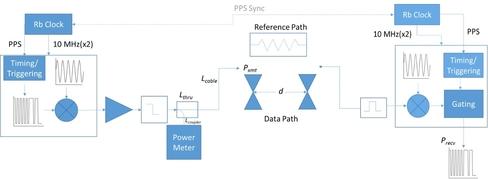
The transmit end of the NIST Channel Sounder transmits a known PN sequence that is modulated with binary phase shift keying (BPSK). On the receive end, the sounder continually detects incoming transmissions and saves the raw detected transmissions for post-processing offline. It is post-processing of the raw data that produces the complex channel impulse responses (CIR) which is used to characterize the industrial environment. The channel impulse response is a valuable tool for designing and deploying communications systems in that it captures how the transmitted waveform distorts as it traverses the industrial environment. Reflection, absorption, diffraction, delay, and attenuation are all captured in the CIR. An example of the magnitude of a CIR is shown in Figure 2.
Figure 2. Sample Power Delay Profile from a Complex Impulse Response
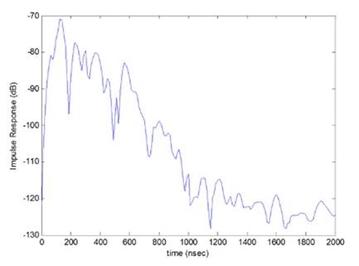
Spectrum Monitoring Data
Passive listening data is used to understand the spectral usage within an industrial facility. This kind of data is produced by simply attaching a high gain antenna to a high-amplitude-resolution spectrum analyzer. The spectral traces from the analyzer are saved to a file over a period of many hours.
Measurement Data
Click here for the measurements meta data: METADATA The meta data will be useful in interpreting and understanding the organization of the data.
NIST Gaithersburg Machine Shop
Representative of a small-to-medium-sized enterprise (SME) prototype fabrication shop or other small automated manufacturing facility. This type of manufacturing environment is typically not fully automated. People work directly on parts with machines. Wireless devices are often used to communicate machine operating status, machine health information, work order information, and other information required to keep the machines running efficiently, workers informed of task orders, parts tracked effectively, and automated vehicles operating safely and reliably.
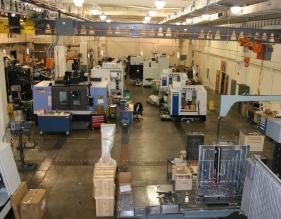
Measurement data includes:
- Active Sounder Measurements
- Passive Listening Measurements
Detroit Transmission Assembly Factory
Represents a large enterprise such as an aerospace or automotive manufacturing facility that brings together hundreds or thousands of parts and manufacturing stages to include design, inventory, assembly, quality/tolerance testing, storage, and shipment. Such factories include robotics, automated ground vehicles, parts and inventory tracking, localization issues, building automation, and personnel safety systems.
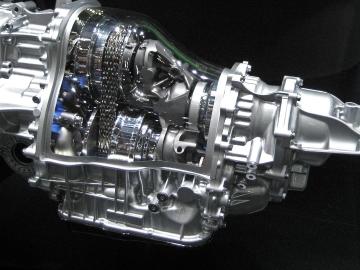
Measurement data includes:
- Active Sounder Measurements
- For stationary cloud measurements, please refer to the METADATA for information on how to extract the stationary cloud measurements from the mobile data. Cloud measurements are the transmission assembly plant were collected by allowing the receive to listen in one place in a non-line-of-sight location for approximately two minutes while machines in the surrounding environment moved and operated.
Passive Listening Measurements
- Transmitter position 1
- Transmitter position 2
Boulder Indoor Steam Plant
The Boulder steam plant is a steam generation facility on the NIST Boulder campus. This steam plant is representative of small-to-medium sized continuous or batch process industrial facilities such as would be found in chemical manufacture, food/candy processing, and similar facilities. This facility was chosen for its large machines and overhead pipes and conduits.
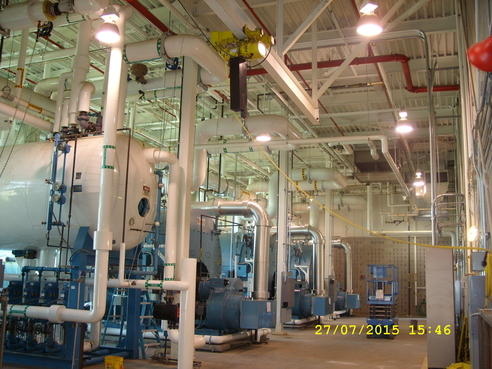
Measurement data includes:
- MOBILE Active Sounder Measurements
- CLOUD Active Sounder Measurements
Passive Listening Measurements
No passive listening measurements were taken at the Boulder steam plant facility.
Notes
- All channel impulse responses have been validated against a known two-ray radio propagation test facility at the NIST Boulder campus known as the OATS facility. The OATS facility is an outdoor open-range test site with a large ground plane installed under-foot at Z=0;
- Cloud measurements were taken at the Gaithersburg machine shop, but were considered to be preliminary and thus not worthy of publishing.

